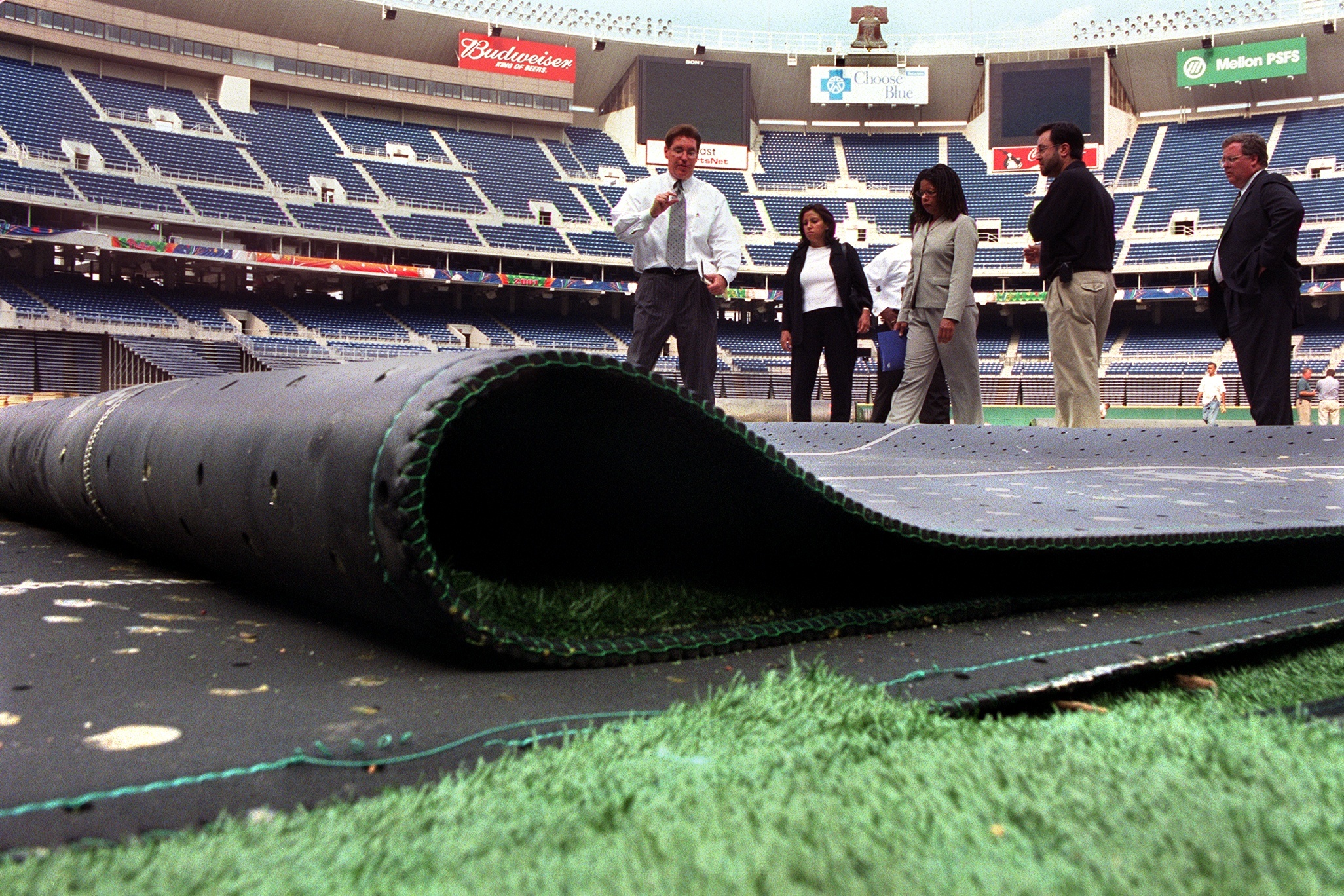We answered readers’ most-asked questions about PFAS, brain cancer, and the Inquirer’s investigation into old Vet turf
Samples of old turf from Veterans Stadium contained PFAS, or so-called “forever chemicals,” according to an Inquirer investigation published earlier this month.

Samples of old turf from Veterans Stadium contained PFAS, or per-and polyfluoroalkyl substances — so-called “forever chemicals,” according to an Inquirer investigation published earlier this month.
The samples, purchased through eBay and tested by two different labs, had at least 16 different types of the chemicals, which the EPA has said cause “adverse health effects that can devastate families.” The finding was part of a larger investigation by The Inquirer that followed the deaths of six former Phillies who all died from the same aggressive brain cancer — glioblastoma.
The Inquirer hosted a Reddit AMA (”Ask Me Anything”) on Tuesday in collaboration with the r/baseball subreddit, answering readers’ most-asked questions about the story. Inquirer reporters Barbara Laker and David Gambacorta were joined by Kyla Bennett, science policy director for Public Employees for Environmental Responsibility, to answer the questions.
Here are a few of their answers. You can read the full thread here.
Q: How did you decide to look into this? Seems like such a random thing.
Answer from Barbara Laker: After David West died last year, we knew there were six Phillies players who had died from brain cancer. And we — and other people — wondered if there was something going on. After research, we decided to look into the artificial turf.
Q: Was the astroturf at old vet stadium different than the other astroturf at other stadiums or was it because of the Stadium itself? I’m really curious if other stadiums could cause this situation because of the same AstroTurf or if it was a singular point at the Vet.
Answer from David Gambacorta: AstroTurf was a specific brand, manufactured by the chemical company Monsanto. They were the dominant player in the turf industry during the 1970s and 1980s, though there were a handful of other companies as well. We haven’t delved into which brands were used by other teams/cities in that era.
Q: Have you compared the rate of glioblastoma in the Phillies to the overall rate of Philadelphians during the same period? Were there other lifestyle commonalities among these players outside of their jobs? I hesitate to draw causative conclusions from preliminary findings that have not yet investigated the impact of other potential variables or looked at other populations.
Answer from Kyla Bennett: We absolutely have not proved causation; pointing out the correlation. Together with very recent peer-reviewed articles that show PFAS in glioblastomas, this is a red flag. There are over 14,000 PFAS, and we only have human health toxicity data on around 25 of them.
Q: What is being done to stop new synthetic turf fields in Philadelphia? All these fields have PFAS...
Answer from David Gambacorta: The city currently plans to create a dozen new turf fields as part of a $250 million renovation of FDR Park in South Philadelphia — a few blocks from where the Vet once stood. Some community groups and environmental advocates oppose this plan; the city has told us they are seeking turf that does not contain PFAS. Though, as Kyla mentions elsewhere in this chat, the chemicals continue to be used in modern turf production.
Q: My school district is proposing to install artificial turf. What’s the best way to get them to improve the natural grass fields instead?
Answer from Kyla Bennett: There are a number of resources — look at Mount Sinai (https://mountsinaiexposomics.org/artificial-turf/) and TURI (https://www.turi.org/Our_Work/Community/Athletic_Playing_Fields). Many community leaders are unaware of the risks. Good luck!
Q: Have you researched the effect on grounds crew?
Answer from Barbara Laker: We are beginning to look at that. We’d love to hear from grounds crew at that time, or their relatives.
Looking for other answers? You can read the full Reddit AMA thread here.